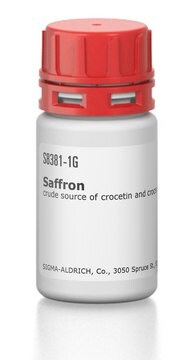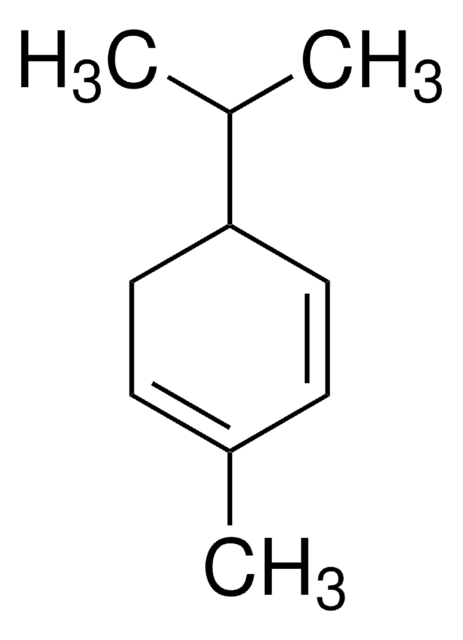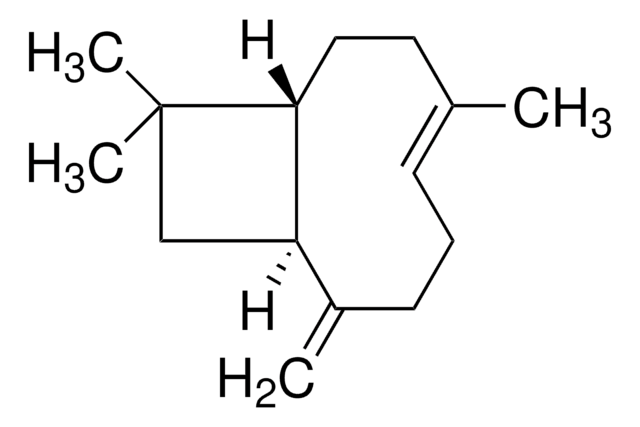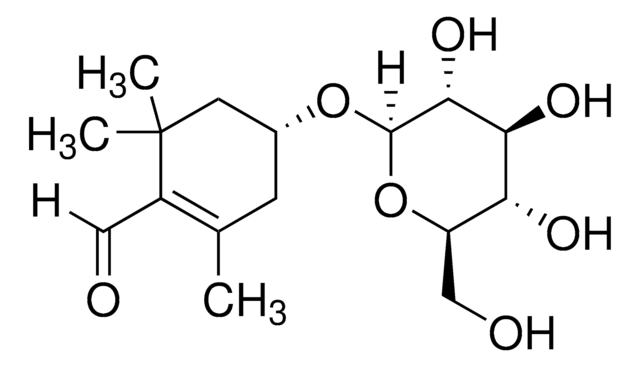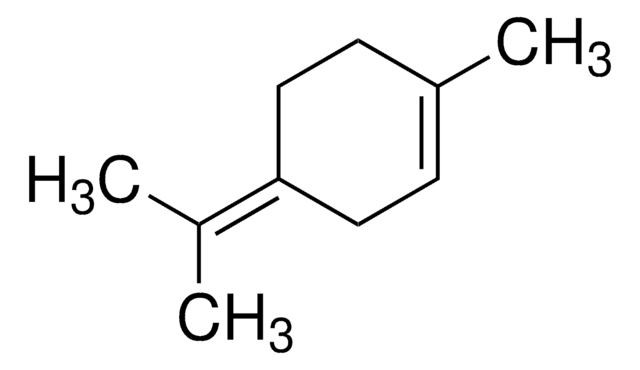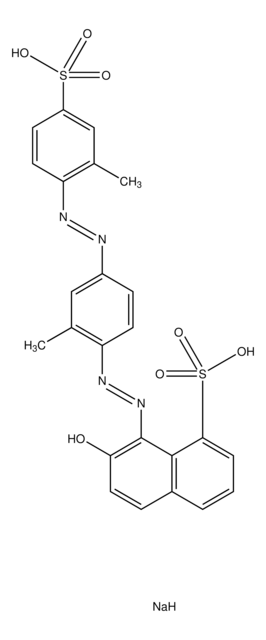Key Documents
W338907
Safranal
≥90%, stabilized
Synonim(y):
2,3-Dihydro-2,2,6-trimethylbenzaldehyde
About This Item
Polecane produkty
pochodzenie biologiczne
synthetic
Poziom jakości
klasa czystości
Halal
Kosher
Próba
≥90%
zawiera
α-tocopherol, synthetic as stabilizer
współczynnik refrakcji
n20/D 1.523 (lit.)
tw
70 °C/1 mmHg (lit.)
gęstość
0.966 g/mL at 25 °C (lit.)
Zastosowanie
flavors and fragrances
Dokumentacja
see Safety & Documentation for available documents
alergen pokarmowy
no known allergens
Organoleptyczne
medicinal; herbaceous; woody; spicy; phenolic
ciąg SMILES
CC1=C(C=O)C(C)(C)CC=C1
InChI
1S/C10H14O/c1-8-5-4-6-10(2,3)9(8)7-11/h4-5,7H,6H2,1-3H3
Klucz InChI
SGAWOGXMMPSZPB-UHFFFAOYSA-N
Szukasz podobnych produktów? Odwiedź Przewodnik dotyczący porównywania produktów
Powiązane kategorie
Opis ogólny
Zastosowanie
- Proteomic and molecular analyses to understand the promotive effect of safranal on soybean growth under salt stress.: This study investigates the role of safranal in enhancing soybean growth under saline conditions through a proteomic and molecular lens, potentially offering insights into stress resistance mechanisms in crops (Kausar et al., 2024).
- Investigation of the effect of safranal and crocin pre-treatment on hepatic injury induced by infrarenal aortic occlusion.: The study evaluates the protective effects of safranal and crocin on liver injury in an experimental model, highlighting their potential therapeutic benefits (Ozkececi et al., 2016).
Oświadczenie o zrzeczeniu się odpowiedzialności
Hasło ostrzegawcze
Warning
Zwroty wskazujące rodzaj zagrożenia
Zwroty wskazujące środki ostrożności
Klasyfikacja zagrożeń
Acute Tox. 4 Oral - Aquatic Chronic 2 - Eye Irrit. 2 - Skin Irrit. 2 - Skin Sens. 1A
Kod klasy składowania
10 - Combustible liquids
Klasa zagrożenia wodnego (WGK)
WGK 3
Temperatura zapłonu (°F)
186.8 °F - closed cup
Temperatura zapłonu (°C)
86 °C - closed cup
Środki ochrony indywidualnej
Eyeshields, Gloves, type ABEK (EN14387) respirator filter
Wybierz jedną z najnowszych wersji:
Masz już ten produkt?
Dokumenty związane z niedawno zakupionymi produktami zostały zamieszczone w Bibliotece dokumentów.
Klienci oglądali również te produkty
Nasz zespół naukowców ma doświadczenie we wszystkich obszarach badań, w tym w naukach przyrodniczych, materiałoznawstwie, syntezie chemicznej, chromatografii, analityce i wielu innych dziedzinach.
Skontaktuj się z zespołem ds. pomocy technicznej
